I am newbee to JavaScript. When I read the Object.create documentation, it is written like 'The Object.create() method creates a new object, using an existing object' (Ref: https://developer.mozilla.org/en-US/docs/Web/JavaScript/Reference/Global_Objects/Object/create). It do not mention anything about the shallow copy of the object. But when I experimented with below script, I confirmed that, create method is performing shallow copy.
var foo = {
a : 100,
details : {
version : 1.1,
name : 'Demo of object inheritance'
},
printInfo : function(){
console.log(this.details.version);
console.log(this.details.name);
console.log(this.a);
}
}
var bar = Object.create(foo);
foo.printInfo();
bar.printInfo();
console.log("\n Updating the details and property a of bar object");
bar.details.version = 2.2;
bar.details.name = "Bar object changed the name";
bar.a = 123456;
console.log("\n")
foo.printInfo();
bar.printInfo();
Is my understanding correct? Please point to me any documentation that confirms create() method performs shallow copy.
When I executed in Scratchpad, I seen below output in console.
1.1
Demo of object inheritance
100
1.1
Demo of object inheritance
100
Updating the details and property a of bar object Scratchpad/1:21:1
2.2
Bar object changed the name
100
2.2
Bar object changed the name
123456

